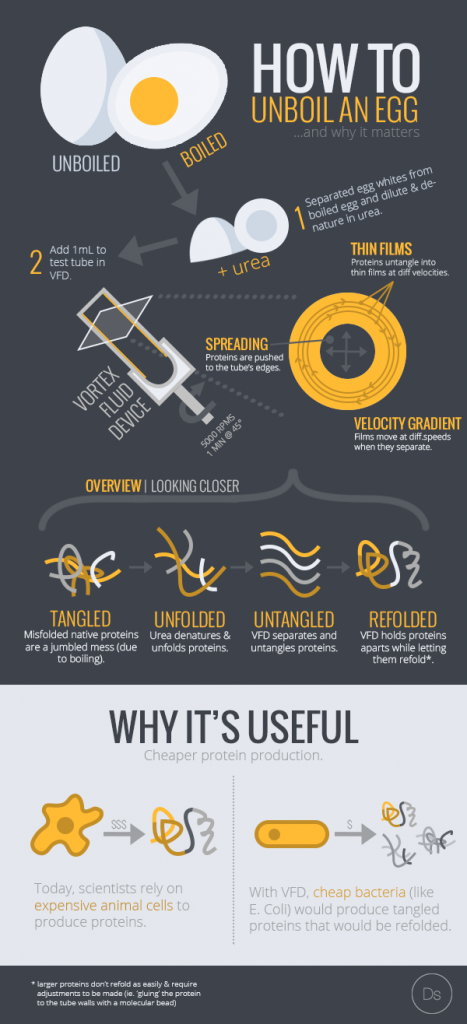
Science communication is broken. The media doesn’t know how to read it well, the general public gets lost, and eyes glaze over at a prodigious rate. There is a widening gap between scientists and the general public. While this gap widens, the ridicule about why scientists are studying what they study increases.
I had a chance to work with Viputheshwar Sitaraman (he goes by Vip), the newest face in science communication. He strives to combine the beauty and simplicity of infographics with the jargon laden world of science in order to make science communication fun for many others. This is his story.
What is the story behind Draw Science? What inspired you to pursue science communication?
I’ve been involved in biology research for five years and was introduced to reading scholarly literature very early — in eighth grade — by my mentor at the time, Dr. Srinivas Gujjarappa. Accordingly, I built my knowledge from virtually nothing by going through the tedious process of looking up literally every other word in journal publications. It was instrumental in building a strong foundation for my understanding of biology, but also turned jargon into one of my most hated archenemies.
Years later, I was at the Intel ISEF where I had a several hour long conversation with a judge, Winston Vuong, about science outreach and blogging. I was inspired and decided to do something about the drawbacks of science communication, so over the summer before college, I created Draw Science as humble personal project. I had always found illustrations the most useful tool in science, I still have many of the diagram in my biology textbook memorized, so I took advantage of my foundation in graphic design and started working on an infographic-based model for science communication.
The contagious growth of Draw Science in the few months its existed inspired me to make a bolder move in terms of reforming science communication: to start a journal. Rather than running the blog as an auxiliary service to mainstream science publication, I want to make a statement that the existing model of science communication through jargon-filled, pay-per-view journals inhibits effective outreach. I’m trying to crowdfund the initial expenses of the journal and set up an entirely new and innovative way of publishing fresh-from-the-lab-bench science in a fun, engaging way.

According to your Draw Science page, you’ve worked previously with startups. How do you plan to apply this to Draw Science as a journal?
I run an early-stage startup called Live, Love, Lab (LLL) focused on educating and inspiring high school students to do research. Early on, I found several barriers to getting into research as a curious scientist-to-be at a very early age. I only succeeded in later conducting wet lab research and even publishing in the World Forum in Biology thanks to one of my teachers, Mrs. Debbie Nipar. I realized the skills and workflow that I learned in school was scalable and can help students across the United States, and perhaps the world. At LLL, we’re working to develop an e-education system to teach students how to design, fund, and execute an experiment in a host lab. The revenue model is based around partnerships with schools and corporations interested in cultivating the elite youth talent in STEM. We should be releasing our first open sources resources for students in a few weeks!
In building a lean, bootstrapped startup, I’ve quickly picked up the skills to (a) work most effectively and efficiently with the least money and resources and (b) connect with those in the field who are most helpful in terms of advice and support. With Draw Science, these skills have already come in use, as chance has brought me in contact with people like yourself who are interested in changing the face of science communication. In the future, it will help me build a journal- especially with the complicated architecture of using graphic designers as middlemen in the publication process- that runs with little waste, bureaucracy, and dogma.
On the other hand, I also run a design agency and work as a freelance designer/developer. Both of these have built my understanding of how to network and work with clients. The same interpersonal and business skills can be applied to working alongside scientists as well. As I further expand Draw Science as well as my other ventures, I hope to cultivate these skills and others to work effectively.
What is your favourite topic to draw? Why?
I try not to discriminate between what specific topics and fields of science that I prefer, but my favorite subjects to draw are structures, as odd as that may sound. Whereas numbers/statistics and systems work really well with the infographic model, I find that structures – anything from a cell to a vortex fluid device – most effectively make use of the power of visual communication.
What do you find the most challenging about representing science in graphical form? The most rewarding?
Walking the fine line between oversimplifying science and expressing it concisely challenges every designers capability to create infographics. I tend to stray often into oversimplifying the science in an attempt to avoid overloading the layperson with jargon, but I have recently realized that the most effective method of creating graphical representations without jargon is through metaphors. For instance, a plasma cell could be referred to as an antibody factory.
What is your ultimate goal with Draw Science?
I don’t think I really have a metric of where I want to be with Draw Science at a specific point in the future. It’s so unpredictable where such projects will take you. My broader goal, however, is to stay mission-driven; I want to create something where people actually like to read research. Take the average group of passersby and you will quickly discover that research may as well be an antonym for interesting. I want to use Draw Science to make it fun and informative to read science.
Is there anything else you want the reader to know?
First, please contribute to the all-or-nothing crowdfunding campaign: just $25 makes you a mentioned sponsor of the journal! We’re super close to the goal and I’m really hoping we make it. In general, if you have any super cool idea, I’d love to hear it. Connect with me on LinkedIn, or send me mail via the contact form on Draw Science. Innovation starts with little people with big ideas: let’s change the world!
